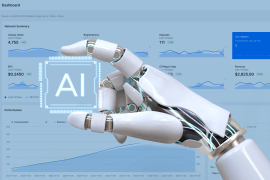In today’s fast-paced work environment, organizations strive to enhance efficiency and productivity within their teams. One effective strategy that many businesses are adopting involves incorporating team time tracker apps. These apps offer a solution to monitor the time dedicated to tasks and projects, allowing managers to identify inefficiencies and make informed decisions.
In this post, we will explore the advantages of integrating team time tracker apps into your organization and how they can contribute to productivity.
Streamlining Workflow and Task Management
One notable benefit of utilizing team time tracker apps is the enhanced management of workflows. With these apps, employers can easily track their employee’s progress in time. Managers gain an overview of who’s working on each task, enabling them to allocate resources efficiently and prevent project bottlenecks.
Moreover, by having a platform for task management, team members can collaborate effectively. App-based comments and updates facilitate communication without the need for email threads or face-to-face meetings.
Tracking Time Spent on Projects
Time is invaluable in any business environment; therefore, it is crucial to ensure its allocation is wise. By incorporating a team time tracking application, businesses can gain insights into the amount of time each employee dedicates to projects or tasks. This information provides metrics that can be utilized for planning and even performance evaluations.
Managers are able to identify areas of concern that may necessitate training or support. Furthermore, having knowledge about the amount of time invested in completed projects offers data for invoice generation, ensuring transparency in client billing while aiding in precise project timeline forecasts.
Avoiding Burnout through Effective Resource Allocation
Continuous work hours without breaks or rest often result in employee burnout, leading to reduced productivity levels and an increase in sick leave requests. With the assistance of team time tracking applications, managers can closely monitor workloads and distribute tasks among team members. The data collected through these applications can be used to identify employees who are burdened with workloads and then redistribute tasks accordingly. This proactive approach helps prevent burnout, fosters employee satisfaction, and ultimately contributes to job satisfaction within the workforce.
Effective Time Estimation and Planning
Time-tracking applications enable organizations to develop estimates for future projects or tasks. By analyzing data from projects, managers can pinpoint trends that affect timelines and enable them to establish realistic deadlines. This helps mitigate the risk of overcommitting, which can lead to missed deadlines and unnecessary pressure on team members.
Furthermore, by utilizing time-tracking applications to access data, organizations can analyze their efficiency in completing tasks. This information facilitates setting expectations for project timelines and provides a better understanding of resource allocation needs, resulting in more efficient planning overall.
Transparency and Accountability
Promoting transparency and accountability is another advantage of integrating team time-tracking apps within an organization. By granting employees access to their hours, they are empowered to take responsibility for managing their time. This fosters a sense of accountability among team members as they are aware that their productivity levels are being monitored.
Moreover, this transparency extends to clients or stakeholders involved in projects. Sharing reports through time tracker apps builds trust by showcasing the progress made at each stage of a project’s lifecycle. Transparency also aids in managing client expectations regarding deadlines by highlighting any obstacles encountered while ensuring clarity around billing processes.
Enhancing Data-driven Decision Making
Another crucial advantage of integrating team time tracker apps is the ability to make data-driven decisions. These applications provide insights into how time is allocated across different tasks, projects, and team members. By analyzing this data, managers can identify trends, patterns, and areas for improvement in the workflow. This data-driven approach allows organizations to optimize their processes continuously, allocate resources more effectively, and make strategic decisions based on a solid understanding of their team’s productivity dynamics.
Conclusion
In conclusion, incorporating team time tracker apps into an organization’s workflow offers benefits, as discussed above. By utilizing these platforms, businesses can anticipate an increase in productivity and a decrease in employee burnout rates. This, in turn, contributes positively to job satisfaction levels.
Last Updated on April 18, 2024





